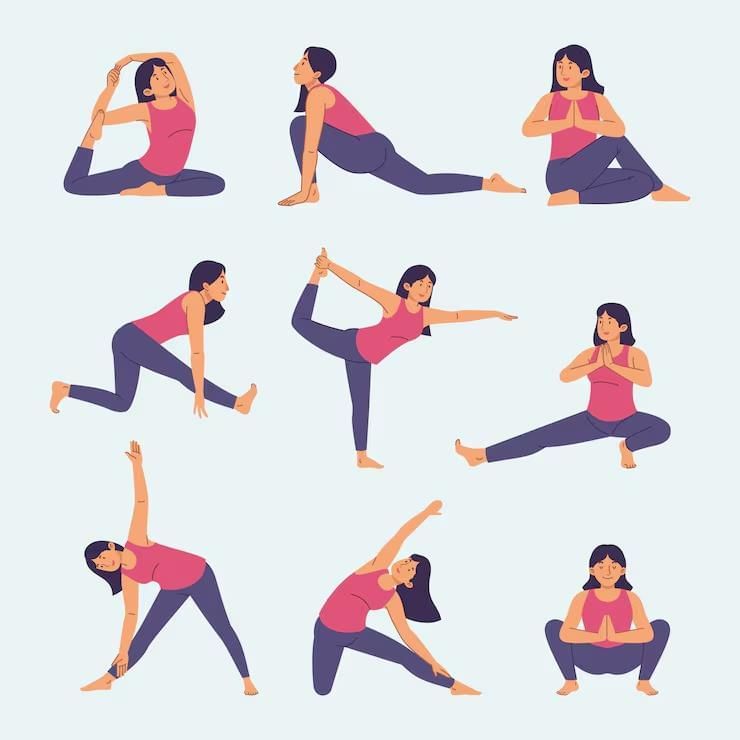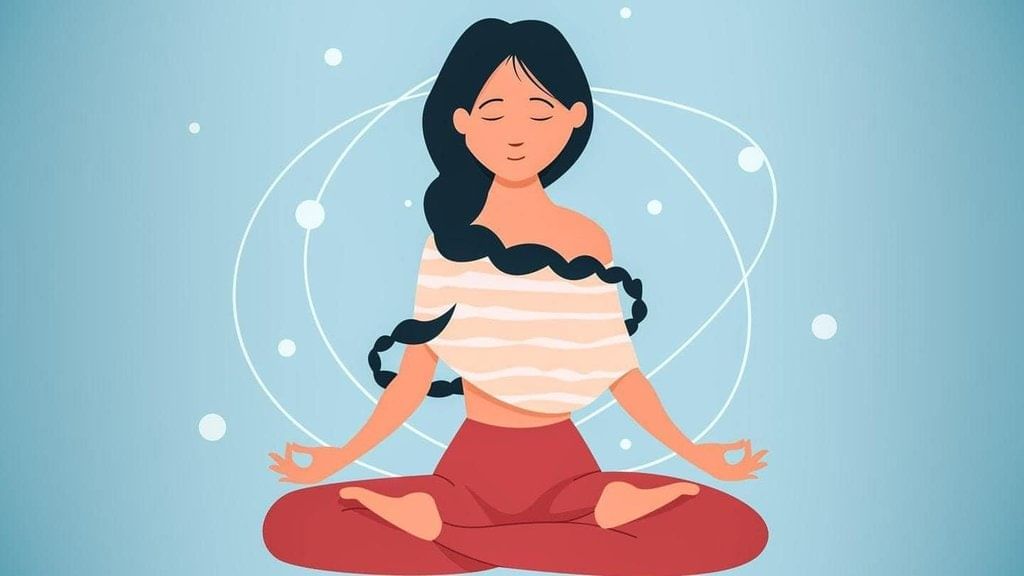Yoga Chapter Notes | Physical Education and Well-being (Khel Yatra) Class 8 PDF Download
| Table of contents |

|
| Introduction |

|
| Meaning of Yoga |

|
| Benefits of Yoga |

|
| Rules of Yoga |

|
| Asanas (Postures) |

|
| Pranayama (Breathing Exercise) |

|
| Meditation (Dhyana) |

|
Introduction
Yoga is an ancient practice from India. It keeps our body healthy and our mind calm. By doing yoga every day, we can stay strong, flexible, and free from stress. Yoga includes asanas (postures), pranayama (breathing exercises), and meditation. It also teaches us discipline and balance in life.
Meaning of Yoga
Yoga means "union". It joins the body, mind, and soul together. It helps us to live a healthy and peaceful life. When we do yoga, we not only exercise our body but also learn to control our mind.
Benefits of Yoga
Makes the body strong and flexible.
Improves blood circulation and digestion.
Keeps the mind calm and stress-free.
Increases concentration and memory.
Helps in controlling anger and emotions.
Prevents diseases and improves overall health.
Rules of Yoga
Always practice yoga on an empty stomach or 3–4 hours after eating.
Wear light and comfortable clothes.
Do yoga in a clean, open, and quiet place.
Use a mat or blanket, never do it on hard ground.
Do yoga slowly, without hurry.
Always breathe properly while doing yoga.
End yoga practice with relaxation.
Asanas (Postures)
 Asanas are special body positions. They make our body strong, flexible, and balanced. Each asana has a way to perform and benefits.
Asanas are special body positions. They make our body strong, flexible, and balanced. Each asana has a way to perform and benefits.
1. Tadasana (Mountain Pose)
How to do:
- Stand straight, feet together.
- Raise both arms above the head and join palms.
- Stretch your whole body upward, stand on toes.
- Hold for a few seconds, then come back slowly.
Benefits:
- Increases height in children.
- Improves posture and balance.
- Strengthens legs and arms.
2. Vrikshasana (Tree Pose)
How to do:
- Stand straight, place right foot on left thigh.
- Balance on one leg.
- Join palms in front of chest or raise above head.
- Hold for some time, then change leg.
Benefits:
- Improves balance and concentration.
- Strengthens legs.
3. Bhujangasana (Cobra Pose)
How to do:
- Lie on stomach, keep hands near shoulders.
- Slowly raise chest upward, head looking up.
- Keep lower body on the ground.
- Hold, then slowly return.
Benefits:
- Makes spine flexible.
- Strengthens back and shoulders.
- Good for lungs and digestion.
4. Shalabhasana (Locust Pose)
How to do:
- Lie on stomach, hands beside thighs.
- Slowly raise legs upward without bending.
- Keep chest on ground.
- Hold, then slowly come back.
Benefits:
- Strengthens back, legs, and hips.
- Improves digestion.
5. Dhanurasana (Bow Pose)
How to do:
- Lie on stomach, fold knees, hold ankles.
- Raise chest and legs upward together.
- Body looks like a bow.
- Hold, then slowly relax.
Benefits:
- Strengthens back and abdomen.
- Improves digestion.
- Makes body flexible.
6. Shavasana (Corpse Pose)
How to do:
- Lie flat on your back.
- Keep arms a little away from body.
- Close eyes, relax whole body.
- Breathe slowly and deeply.
Benefits:
- Removes tiredness.
- Calms the mind.
- Gives full relaxation to body.
Pranayama (Breathing Exercise)
Pranayama means controlling the breath. It helps in making lungs strong and keeps mind peaceful.
Anulom-Vilom (Alternate Breathing)
How to do:
- Sit in a cross-legged position.
- Close right nostril, breathe in from left.
- Close left nostril, breathe out from right.
- Repeat slowly.
Benefits:
- Purifies blood.
- Increases concentration.
- Removes stress and anxiety.
Meditation (Dhyana)
 Meditation means focusing the mind on one thought or sound.
Meditation means focusing the mind on one thought or sound.
How to do:
- Sit in a quiet place, close eyes.
- Sit straight and relax body.
- Focus on breathing or chant "Om".
Benefits:
- Makes mind peaceful.
- Increases memory and focus.
- Reduces stress.
FAQs on Yoga Chapter Notes - Physical Education and Well-being (Khel Yatra) Class 8
| 1. What is the meaning of Yoga and how did it originate? |  |
| 2. What are the primary benefits of practicing Yoga? |  |
| 3. What are some essential rules or guidelines to follow when practicing Yoga? |  |
| 4. Can you explain the different types of Asanas (postures) and their significance? |  |
| 5. What is the role of Pranayama and Meditation (Dhyana) in Yoga practice? |  |















